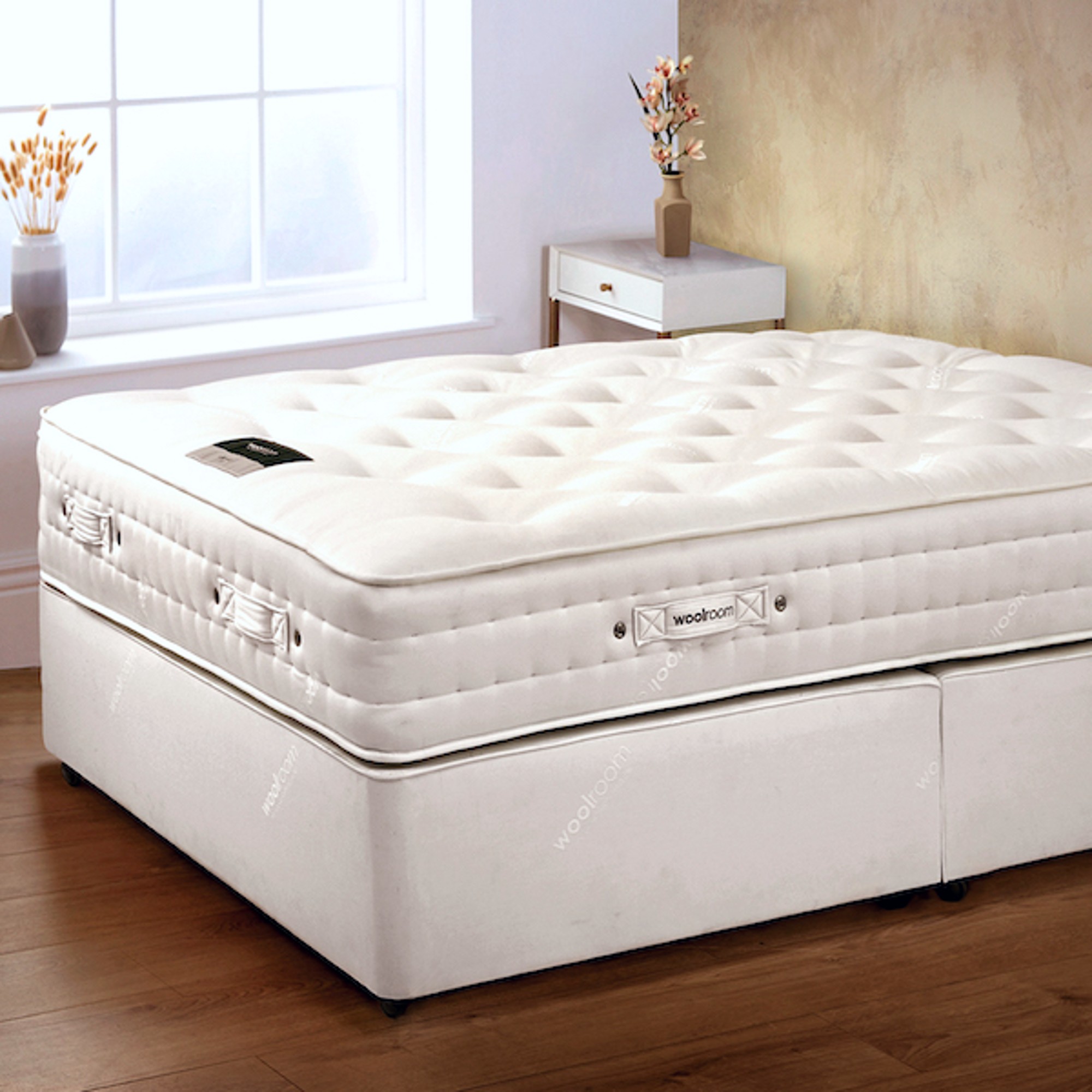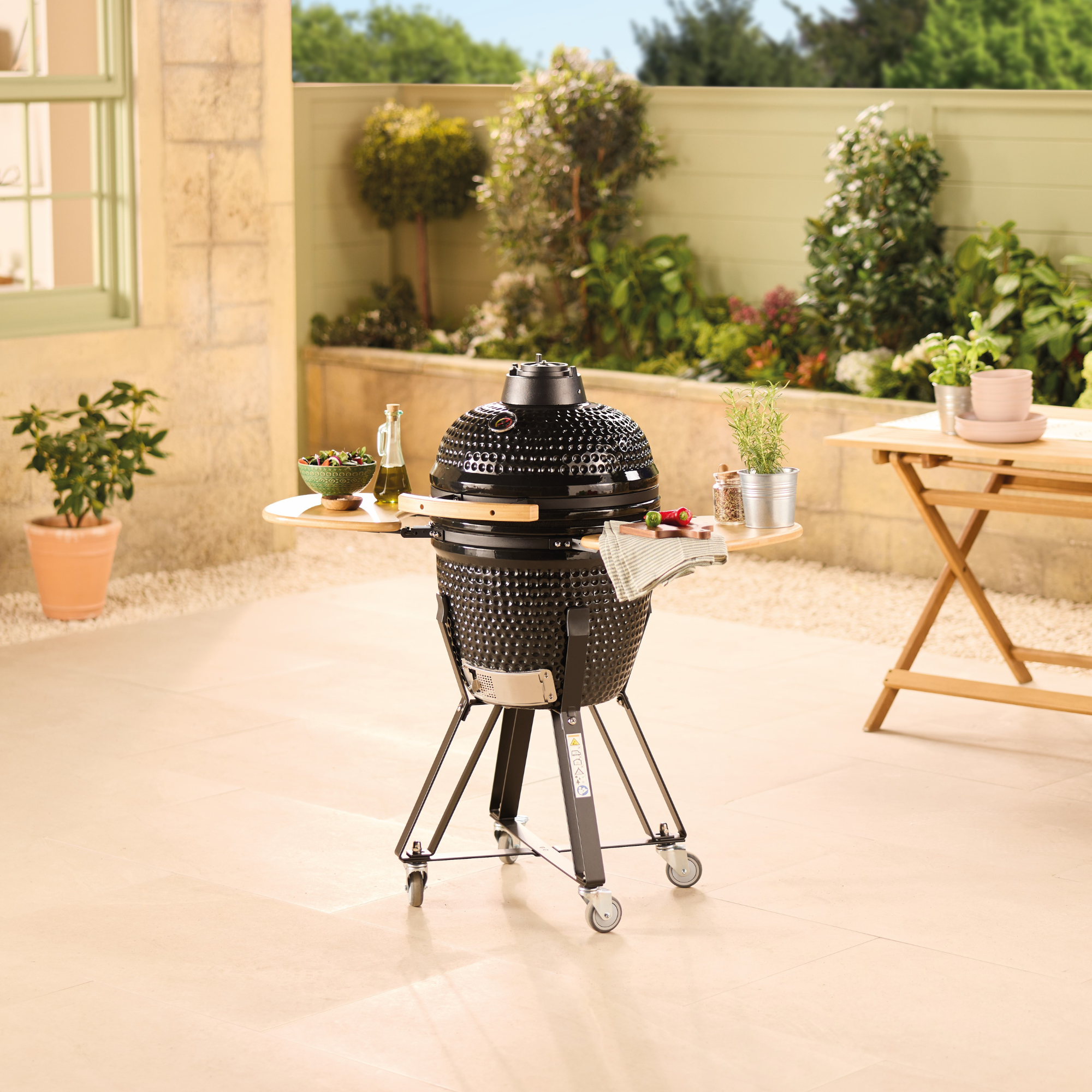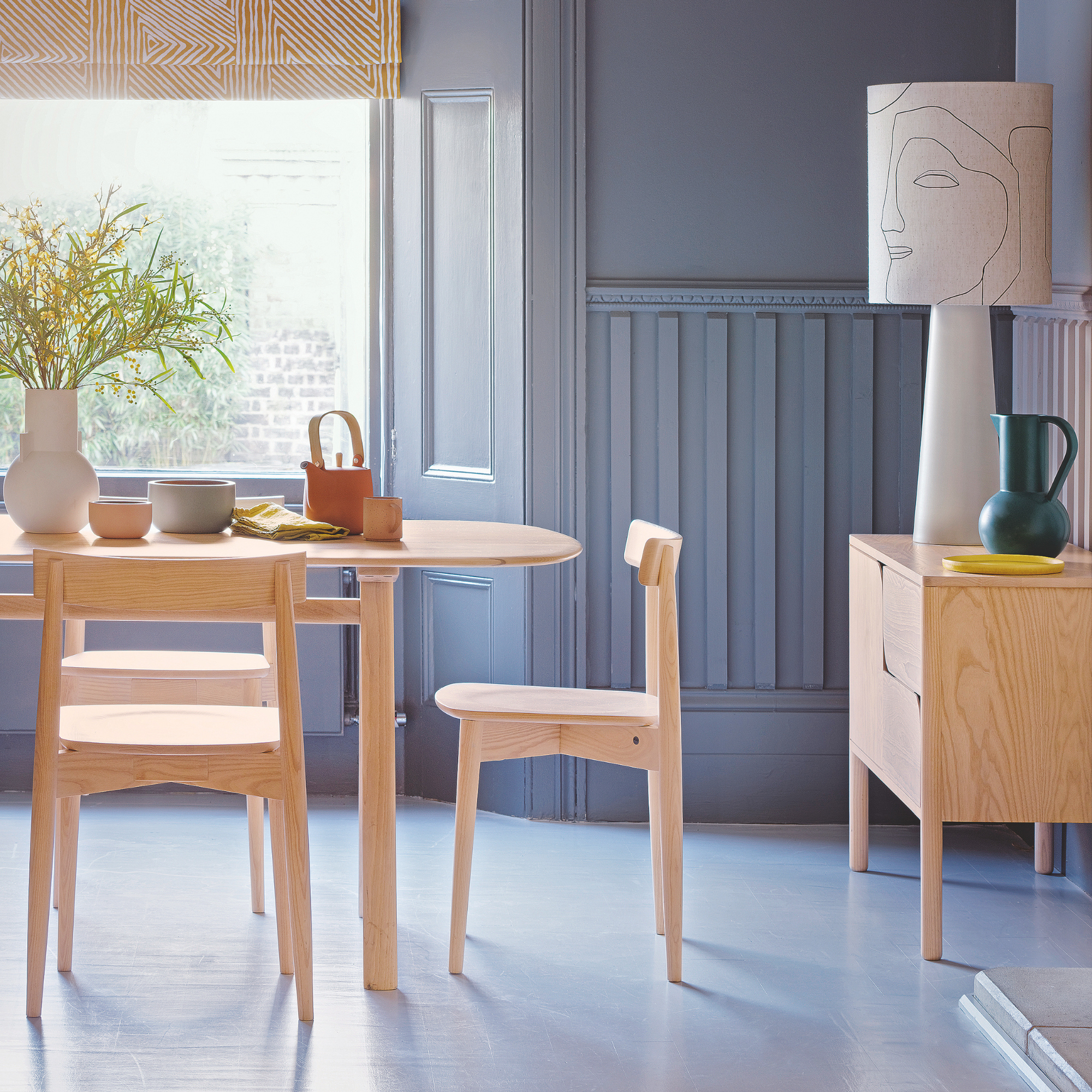Woolroom Hebridean 3000 mattress review – swap out synthetics for a natural, chemical-free sleep
Looking for a more sustainable sleep? Our Woolroom Hebridean 3000 mattress review puts this environmentally friendlier, chemical-free mattress to the test

A chemical-free mattress made of breathable natural materials that's great for hot sleepers and those who care about their mattress's impact on the environment
-
+
Chemical-free
-
+
Natural materials
-
+
Temperature regulating – great for hot sleepers
-
+
Firm, so good for heavier sleepers and front sleepers
-
+
Very little motion transfer
-
+
Double-sided
-
-
Wool smell for the first few months
-
-
Not so good for lightweight sleepers or side sleepers
-
-
Very heavy to move
Why you can trust Ideal Home

Trying to find a sustainable or more environmentally friendly mattress can be a tall order, which is why we were keen to conduct this Woolroom Hebridean 3000 mattress review and see how the brand's chemical-free, natural-fill mattress fared in our sleep tests.
As the name suggests, the Woolroom brand is big on wool, and if you spend a little time digging into the detail, it's easy to see why. The perfect bedding material – that fell out of favour when cheaper yet unsustainable foams and polyesters entered the market – wool is insulating, breathable, temperature regulating, hypoallergenic, durable, and a sustainable and renewable resource.
Importantly for mattress production, wool is also naturally fire retardant, which means none of Woolroom's mattresses are coated in the chemical fire retardants required for synthetic mattresses.
Kinder to the environment, and potentially gentler on those sleeping on it, we're sold on the Hebridean's natural attributes. But, is it comfortable to sleep on? And is wool the wonder stuff we've been missing from our sleep routine? We were eager to put the Hebridean to the test to see if it could give some of the bestselling mattresses in Ideal Home's best mattress guide a run for their money.
Woolroom Hebridean 3000 mattress review: the details
Type: Pocket-spring
Construction Materials: Pocket springs, micro coils, British wool, cashmere, silk, and cotton
Number of springs: 3000 (1000 pocket spring / 2000 micro coil)
Memory foam: No
Sizes: Single / Double / King / Super King
Comfort level: Medium
Height: 28cm
Double-sided: Yes – can be flipped
Manufacturer sleep trial: 100 nights*
Manufacturer warranty: 5 years* (*T&C's apply)
Woolroom Hebridean 3000 mattress review: what the brand says
The Hebridean is one of Woolroom's entry-level mattresses, and although it's still an investment at just over £1000 for a double, that's actually a fairly reasonable price for a traditionally made, hand-tufted mattress that's filled with natural fibres. In this case, that's a mix of wool, cashmere, silk, and cotton with added bounce delivered by 3000 springs (a mix of 1000 pocket springs and 2000 micro coil springs).
Designed, developed and handmade in the UK, the Hebridean mattress contains 'Wool ID® Traceable wool' meaning you can find out exactly which farm your mattress's wool filling was procured from, and like all of Woolroom's products, it's this wool fill that makes the mattress stand out from the crowd.
The mattress's biggest USP is its chemical-free manufacture. Free from latex, foam, and any synthetics, the natural fill means there's no toxic chemical off-gassing, with the merino wool blend covering and the hand-selected surface wool layer meeting strict UK regulations for flammability, eliminating the usual need for chemical fire retardants to be added to the mattress.
Not just more healthy for sleepers, the Hebridean's natural wool content also makes it breathable, temperature regulating, hypoallergenic, and durable, plus, with wool a renewable resource, it's kinder on the planet than a synthetic mattress. The natural materials used in the fill are also biodegradable at the end of the mattress's lifespan – unlike a foam or meomory foam mattress.
The Ideal Home team has previously reviewed a number of Woolroom's products and found the brand's bedding to rank amongst the best duvets and best mattress protectors we've tried and tested – especially if you're a hot sleeper. We're definitely now convinced of the benefits of wool bedding, so we were eager to find out if we would love this mattress just as much.

Woolroom Hebridean 3000 mattress review: Ideal Home testing
I slept on the Woolroom Hebridean 3000 mattress for three months to test out its performance. A reviewer's height, weight, sleep preferences (i.e. whether you're a side, back, or front sleeper), and any pre-existing aches and pains can all shape their thoughts on a mattress, so I've included my sleep stats here:

Sleep position: front or side Tension preference: medium-firm Sleep problems: overheating Height & weight: 5"10 and 10-11 stone Average sleep time: 7 hours
Read on to find out my thoughts on the Woolroom Hebridean 3000 mattress.
Unboxing and delivery
Unlike many popular mattresses, the Woolroom Hebridean 3000 is definitely no mattress-in-a-box. This mattress arrived flat and to be honest I'm not sure how the two delivery men managed to get it up the stairs into my first floor apartment, because it's heavy. A lot heavier than the already fairly weighty memory foam mattress it was replacing on the bed.
The mattress is also fairly deep at 28cm and doesn't have that much flexibility so make sure to doublecheck your access dimensions with the Woolroom team before ordering, and definitely make the most of the brand's free delivery service to a room of your choice. In fact, unless you have some strong muscles to help you lift it onto the bed I'd recommend opting to have the delivery team install the mattress for you.

First impressions
Aside from being astounded at the weight of the mattress, I have to admit the next thing I noticed was the aroma.
Admittedly I do have a very sensitive sense of smell. I'm one of those people who really struggle with that 'new mattress' smell that we associate with synthetic mattresses – which is actually the chemical off-gassing that Woolroom's all-natural mattresses seek to eliminate – as it triggers an instant headache for me, so happily there was none of that present.
However, this being a wool mattress, I did find the wool/sheep smell was pretty powerful, to begin with. It's not an unpleasant smell, and I would far prefer the natural aroma to the chemical onslaught of a synthetic mattress, but, it won't be for everyone.
It's worth noting that I had guests to stay – who slept on this mattress within the first month of its arrival – who didn't notice any of that wool-whiff. So it may all come down to your personal sense of smell. Either way, after three months and a lot of airing, I can happily sleep on this mattress without noticing any smell.
How comfortable is the Woolroom Hebridean 3000 mattress?
Comfort:
Swapping from a memory foam mattress to this pocket spring model meant that initially the Woolroom Hebridean 3000 mattress did feel pretty firm. Woolroom class it as a medium tension mattress, and I daresay it will soften over time, but, personally, I'd rank it at the firmer end of the spectrum.
After many years as a side sleeper, I've recently swapped over to front sleeping (apparently the worst sleep position for your back health, so don't follow my example!). The firmer mattress surface is great for this as it stops your hips from sinking whilst laying on your front, it does mean that there isn't as much cushioning as you'll get from a memory foam or latex-topped mattress if you're a side sleeper though.
Having slept on either a memory foam or flat quilted mattress for a good length of time, it also took a while to get used to the tufted mattress surface.
Unlike synthetic mattresses which are held together by strong solvent glues and so tend to have a flat surface, natural fibre mattresses are created the traditional way, by 'tufting'. This involves using a (very) large needle to punch strong ribbon or thread through all the layers of the mattress, and then pulling this ribbon tight to secure the layers together. This creates the 'dimpled' surface of the mattress. Tufts, or in this case woollen pompoms, are then used to secure the ends of the ribbon on both sides of the mattress.

The tufting on the Woolroom Hebridean 3000 mattress finished with wool pompoms
Once you're laid on the mattress your body weight compresses the mattress so the tufting is barely discernible, but if you're lighter – which in the grand scheme of things I am – then your body will compress the mattress surface a little less, making the tufting slightly more noticeable. For me, it definitely makes the mattress surface feel a little lumpier than the totally flat foam or memory foam mattresses I've previously been testing.
All in all, for me – bearing in mind I'm lighter and prefer the occasional stretch of side sleeping – this isn't the most comfortable mattress I've ever tested. However, if you're a heavier-weight back or front sleeper then you're more likely to find this mattress a good fit.
Motion transfer:
Despite not having the 'deadening' effect of a memory foam or latex upper, the Woolroom Hebridean 3000 mattress scored very well on the motion transfer front – meaning there was very little. Usually, on a cheaper pocket-spring mattress, the 'bounce' can travel through the mattress, so if one person is tossing and turning in bed then the vibration can disturb their partner. On the Hebridean there was very little movement transference, with the wool support layer obviously doing a great job of insulating and dampening any movement.

A 12kg kettlebell showing the level of motion-transfer-reducing padding in the top layer of the Woolroom Hebridean 3000 mattress
Edge support:
The breakdown of the Hebridean's construction doesn't mention any built-in edge support, and it doesn't feel particularly reinforced at the edges. That said, you'd need to be sleeping extremely close to the edge to be at risk of any 'roll off', and because of the lack of motion transfer there's not much chance of being 'bounced' out of bed by your partner jumping in.

A 12kg kettlebell showing edge support at the side of the Woolroom Hebridean 3000 mattress
Temperature regulation:
For me, temperature regaulation is where the Woolroom Hebridean 3000 mattress really comes into its own.
Most synthetic mattress manufacturers spend a lot of time and money trying to combat the lack of breathability of the man-made fibres used in their mattress construction. Whether foam or memory foam, these mattresses are made of materials that are a variation on polyester or polyurethane – both of them forms of plastic derived from petroleum – and, if you think of their essence as being similar to a plastic bag, it's easy to see why a synthetic mattress can quickly get pretty hot and sweaty, with body heat – and the moisture all of our bodies give off during the night – being reflected back towards the sleeper. If you regularly wake up too hot in the night, it could well be your synthetic mattress, mattress protector, or duvet to blame.
Natural materials, in particular wool, are far better at insulating whilst also offering the kind of breathability that prevents overheating. Helping to keep sheep warm in the winter and cool in the summer, wool is temperature regulating, which is great news for maintaining a comfortable and steady temperature on bed throughout the night.
Wool is also naturally absorbent, wicking moisture away from the body and releasing it into the air, and creating a 'breathable' mattress.
As a hot sleeper, I definitely found this mattress regulated my overnight temperature far better than a synthetic mattress, meaning I slept more solidly throughout the night rather than waking up too hot.
Whilst this won't be a factor for everyone, if you're a sufferer of the night sweats or suffering from menopausal hot flushes, investing in a mattress made from natural fibres is well worth considering.
Natural materials and chemical-free:
It's worth making a bit of a song and dance about the chemical-free element of Woolroom's products, as it's something of a rarity in the mattress world.
Not only is the mattress filled with natural fibres over synthetics – which means the mattress fill is far more biodegradable and kinder on the environment than oil-based synthetics – the traditional hand-tufted method of manufacture also eliminates the need for any of the strong adhesives used to bind foam and memory foam mattresses together.
On top of this, the naturally fire-retardent merino wool-blend cover means that, unlike most mattresses, the Woolroom Hebridean 3000 mattress doesn't have to be coated in fire retardant. Combined with the absence of latex, foam, and other synthetic materials, that means no chemical off-gassing is emitted from this all-natural sleep surface.
Final verdict: Is the Woolroom Hebridean 3000 mattress worth the money?
If you're looking to invest in a Woolroom mattress, then it's likely you've discovered the brand because you're looking for a more natural and less environmentally impactful night's sleep.
Like many sectors, there can be a lot of greenwashing in the mattress world. As consumers become more environmentally conscious, 'green' has become another marketing tool, with many mattress manufacturers talking loudly about recycled plastics or the number of trees planted for each mattress sold.
Of all the mattress manufacturers we've come across, Woolroom is one of the most authentic in terms of its commitment to natural materials and lessening the environmental impact of its products, so from an environmental standpoint, there are a lot of good reasons to invest in a Woolroom mattress. If you're conscious of the effects of synthetic off-gassing and chemical fire retardants on your health, then that's another vote in favour of opting for this all-natural mattress brand.
On top of that, like all of Woolroom's bedding I found the mattress' wool fill was superb at temperature regulation, so if you're naturally a hot sleeper or suffer from night sweats, I'd highly recommend investigating wool bedding. There was also very little motion transfer with this mattress, and the double-sided design means you can flip it for extra longevity.
That said, unfortunately (for me, as I really wanted to love this mattress), I just didn't find it as comfortable as other mattresses I've tried and tested. Although it will no doubt flatten over time, as a lighter-weight sleeper the tufted surface was just too noticeably 'lumpy' for me. And although I found front sleeping more comfortable, side sleeping was a fairly firm affair. The mattress's weight is also a factor to consider – you're going to need to have help and a good amount of strength to rotate and flip this mattress.
That said, if you're a heavier build than me, a back sleeper, and your determined to invest your cash in a more sustainably-minded manufacturer, this could be a good mattress for you. Woolroom currently offers a 100-night sleep trial on any of its mattresses (terms and conditions apply), so it's well worth giving this natural-fill mattress a shot.
Get the Ideal Home Newsletter
Sign up to our newsletter for style and decor inspiration, house makeovers, project advice and more.

Amy is Ideal Home’s Sleep Editor and the Ideal Home Certified Expert on Sleep. She's spent the last four years researching and writing about what makes for the best night’s sleep during the day and testing out sleep products to find the best-in-class by night. So far she’s clocked up over 10,000 hours of pillow, duvet, and mattress testing experience.
Our go-to for all things sleep-related, she’s slept on and under bestselling products from Simba, Emma, Hypnos, Tempur, Silentnight, Panda, and many many more.
As a hot sleeper, Amy is always on the lookout for the most breathable bedding, but she also leads a wider team of testers to ensure our product testing encompasses both hot sleepers, cold sleepers, front sleepers, back sleepers, side sleepers, and everything in-between.
-
 Aldi’s cult Kamado BBQ is returning to stores and it's £100 cheaper than last time
Aldi’s cult Kamado BBQ is returning to stores and it's £100 cheaper than last timeThis budget BBQ is only a fraction of the price of this celebrity favourite
By Kezia Reynolds
-
 Blueberry is this spring's ‘it’ blue – but there are 3 colours you should never pair with it, according to experts
Blueberry is this spring's ‘it’ blue – but there are 3 colours you should never pair with it, according to expertsAvoid overpowering your space by avoiding these three bold colours
By Kezia Reynolds
-
 Amanda Holden's maximalist guest bedroom uses this smart decorating trick to make it look bigger – it embraces the awkward angles of a dormer ceiling
Amanda Holden's maximalist guest bedroom uses this smart decorating trick to make it look bigger – it embraces the awkward angles of a dormer ceilingInterior experts say it's a masterclass in how to decorate a dormer bedroom
By Amy Lockwood